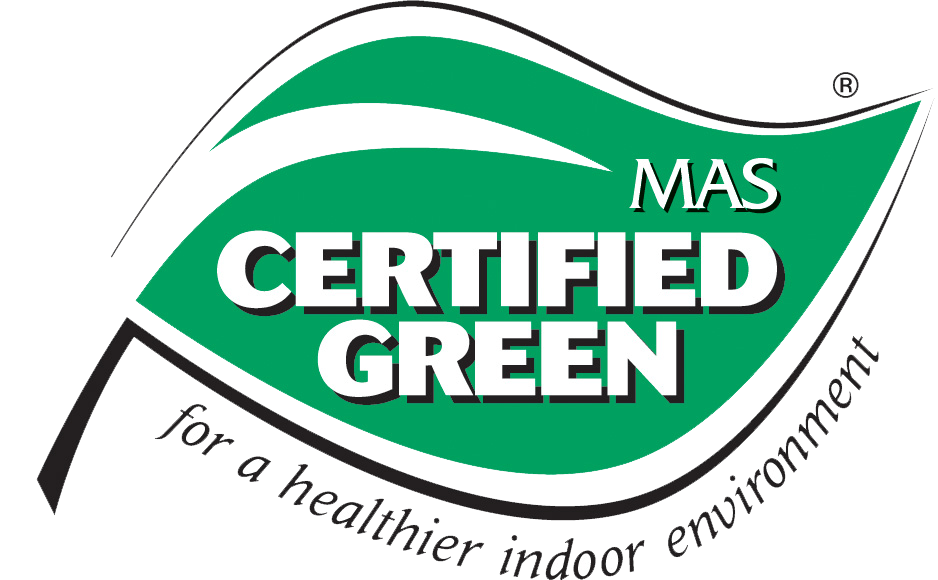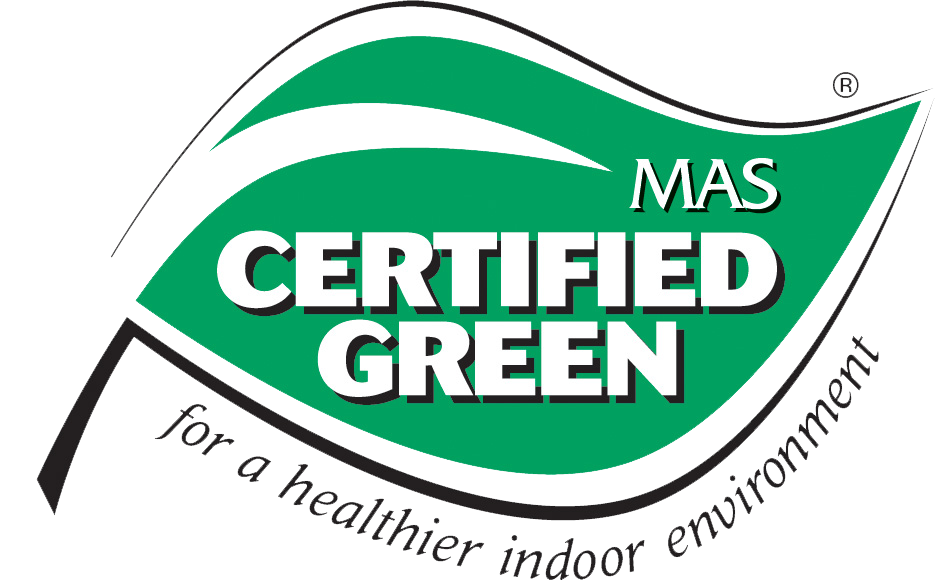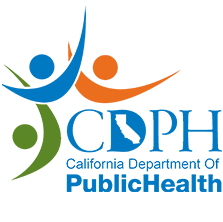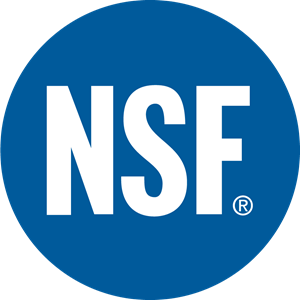Become Certified
How to Become Certified?
Step 1. Consult/ Application
Step 2. Submit
Step 3. Test
Testing is conducted by Materials Analytical Services, LLC (MAS), the testing body that performs testing on samples submitted for the MAS Certified Green® program. Materials Analytical Services, LLC (MAS) is ISO/IEC 17025 accredited by A2LA to perform testing to ANSI/BIFMA M7.1 and CDPH Standard Method and is recognized by ANSI/BIFMA, CDPH, LEED, GSA, and many other organizations as meeting their laboratory testing requirements.
Step 4. Certify
Materials Analytical Services, LLC and the MAS Certified Green program operate independently of one another. The MAS Certified Green® program is ISO/IEC 17065 accredited by A2LA as a third-party certification body. MAS Certified Green® is recognized globally as one of the premier certification marks for low VOC-emitting products.
Understanding Emissions Testing
MAS provides both static and dynamic emissions testing services to determine the type and concentrations of chemical compounds potentially off-gassed from finished products and raw materials into the indoor environment.
Static test protocols typically involve a headspace measurement of emissions yielding qualitative results derived from short duration “flash” emissions. Dynamic test methods are similar but involve placing a sample in an inert chamber and monitoring off-gassed emissions over a set period of time (accounting for indoor ventilation rates typical of today’s building environments). The advantages of dynamic or chamber test methods are that they allow for predictions of air concentrations in the future by establishing decay curves for the materials tested.
Chamber emission testing was originally developed by EPA to assess the potential off-gassing of hazardous compounds from building and interior finish goods. Since its development, emissions testing has been adopted by a number of municipalities, trade organizations, and regulatory agencies worldwide. Of note: This type of testing is now required for certain construction and interior finish materials manufactured and used in the State of California. This type of testing is also necessary to achieve user credits under the USGBC LEED program promoting Green Building and is also required under many International Standards in Europe and Asia.
The drive behind emission testing is to limit the amount of volatile organic compounds (VOCs) released into indoor environments. VOCs include a variety of chemicals, some of which may have short- and long-term adverse health effects. Concentrations of many VOCs are consistently higher indoors (up to ten times higher) than outdoors. Formaldehyde is one of the best known VOCs (constantly making news and under increasing state and federal regulation. It is often associated with glues and resins used in composite/engineered woods and certain finishes associated with a wide variety of construction materials, furniture, and interior finishes.
Outside mandated emission testing, on a much broader basis, there is heightened consumer interest and demand for “green” products as well as concern for indoor air quality (IAQ) levels in homes and commercial buildings. Today, the majority of the emissions testing is conducted as a means of delineating a product or group of products in the marketplace as “green”.
Within industry trade organizations there are several groups including the Carpet & Rug Institute (CRI), the Business + Institutional Furniture Manufacturers Association (BIFMA) and the Adhesives and Sealant Council (ASC) which have established specific emissions standards for their memberships.
FAQs
Unfortunately, it is not possible to simply look at a product and know whether it will pass or fail with any degree of accuracy – hence why testing is required. That said, presented below are a few facts that will help to shed some light on this matter:
1. Historically most educational furniture and seating submitted to MAS will comply with the 7- day LEED and 14-day CDPH/CHPS standard (in some cases use of an alternative low emitting top coat finishes on wood veneered furniture is required).
2. In general, plastic laminated and melamine case goods and work surfaces tend to fair better and are lower emitters (comparatively) than top coated wood veneered based systems.
3. Historically chromed and powder coated metal components are very low emitters
4. Relative to wood based furniture – hardwood plywood is a lower emitter than MDF and particle board.
5. On most wood veneered products, it is the type of top coat finish used that typically is the decisive factor on whether a product will pass or not. Historically conversion varnishes, certain lacquers and catalyzed finishes have a harder time pass than water based polyurethanes and solid UV finishes.
6. Sealing exposed MDF and particleboard edges with edge banding and/or sprayed sealants, along with use of backer sheets helps to reduce emissions from the cores of composite woods.
7. Fiberglass used in some acoustical panels can emit high levels of formaldehyde, but there are low emitting types available (the density of the fabric covering will impact emissions of the underlying batts).
8. Most chairs (executive and task seating) covered under the LEED/CHPS standard have an easier time passing than workstations due largely to scale. Historically, MAS has never tested a typical polymer based chair that was not compliant.
9. Relative to upholstered furniture, the types of foam and backer boards used typically impact emissions the most. Most woven fabrics / textiles will not significantly impact the overall emissions. That said, use of leathers and vinyls will affect emissions as they are significantly less porous and tend to impede but not stop emissions of the underlying materials.
10. Comparatively, most vinyls and the coating used on leather coverings will contribute negatively to the off-gassed emissions from upholstered furniture.
11. Using short duration, small scale comparative R&D tests to identify a “worst” case scenario of construction / component options (that exist in product lines), MAS can effectively certify multiple products (2 to 30) under a single cost savings compliance test.
12. As an evaluator step, MAS typically conducts lower cost small scale “screening” test on representative “worst” case scenario samples of a product line to determine the likelihood of compliance of all similar products in that line – without incurring the expense of manufacturing and testing a full size sample.
13. If requested MAS can determine with a single test furniture compliance with multiple standards including: BIFMA and CDPH (Section 1350).
14. Note: In January 2012, CDPH and CHPS based standards for formaldehyde emissions will be dramatically lowered from the current air concentration of 16.5 μg/m3 to 9 μg/m3. This reduction will represent a significant challenge for certain manufacturer s and types of furniture.
© 2021 MAS Certified Green®
Emissions of VOCs are cumulative and they can be interactive. This means all raw materials used in a finished product that contain VOCs will over time off-gas from it and can combine with other chemicals to form new VOCs. To minimize the overall impact of VOCs – prudent manufacturers should implement the following preemptive steps:
1. Screen all raw material /component suppliers for formaldehyde use. An easy initial step is to begin this process is to review Material Safety Data Sheets (MSDS) for the presence of formaldehyde and other regulated VOCs in product Formulations.
2. Ask suppliers for test data and a declaration that supports no or minimal formaldehyde use in the formulation.
3. Manufacturers of furniture using composite wood substrates should request products that are certified as (in order of preference):
a). CARB Phase II compliant for formaldehyde emissions,
b). Ultra Low Emitting Formaldehyde Resins (ULEF), or c). No-Added Formaldehyde (NAF). Ask for proof and note, that these certifications must be updated at least annually –so check the date of the last test.
4. Many adhesives and glues used in construction / assembly often contain high levels of formaldehyde – find substitutes or use minimally
5. Top coat finishes and paints often contain high levels of formaldehyde and other target VOCs. Actual emissions test data confirming off gassed concentrations is the best evaluatory tool. Reliance solely on VOC content compliant with Green Seal and/or SCAQMD Rule 1168 is not sufficient.
6. Many types of fiberglass, Kraft papers, vinyls and other soft plastics are high VOC emitters – find substitutes or use minimally
7. Frequently minor variations in the manufacturing process can have significant impacts on offgassed emissions including; increasing drying oven temperatures, increasing drying time, increasing ventilation flows, use of breathable packaging increasing age of stocked products, etc.
© 2021 MAS Certified Green®








